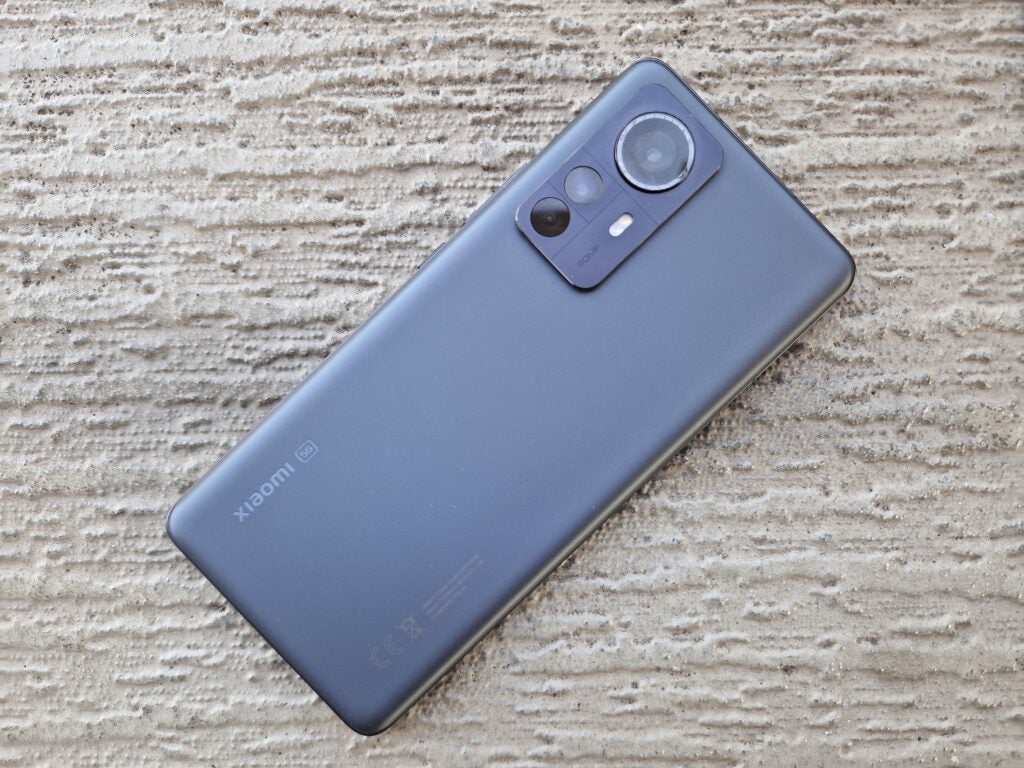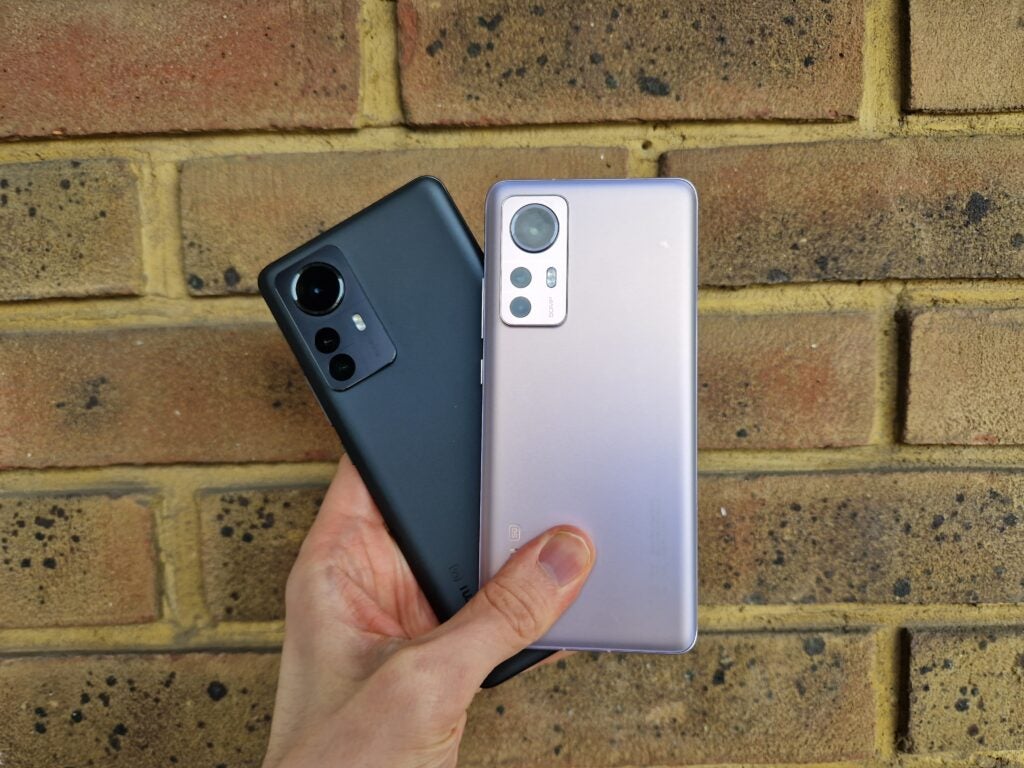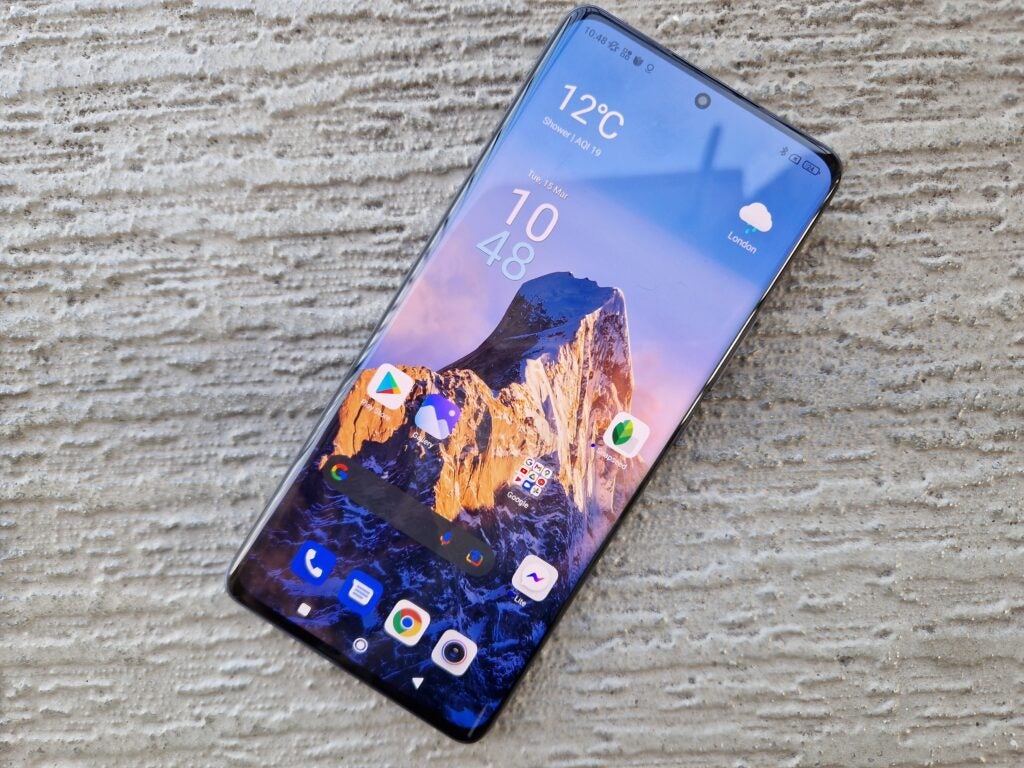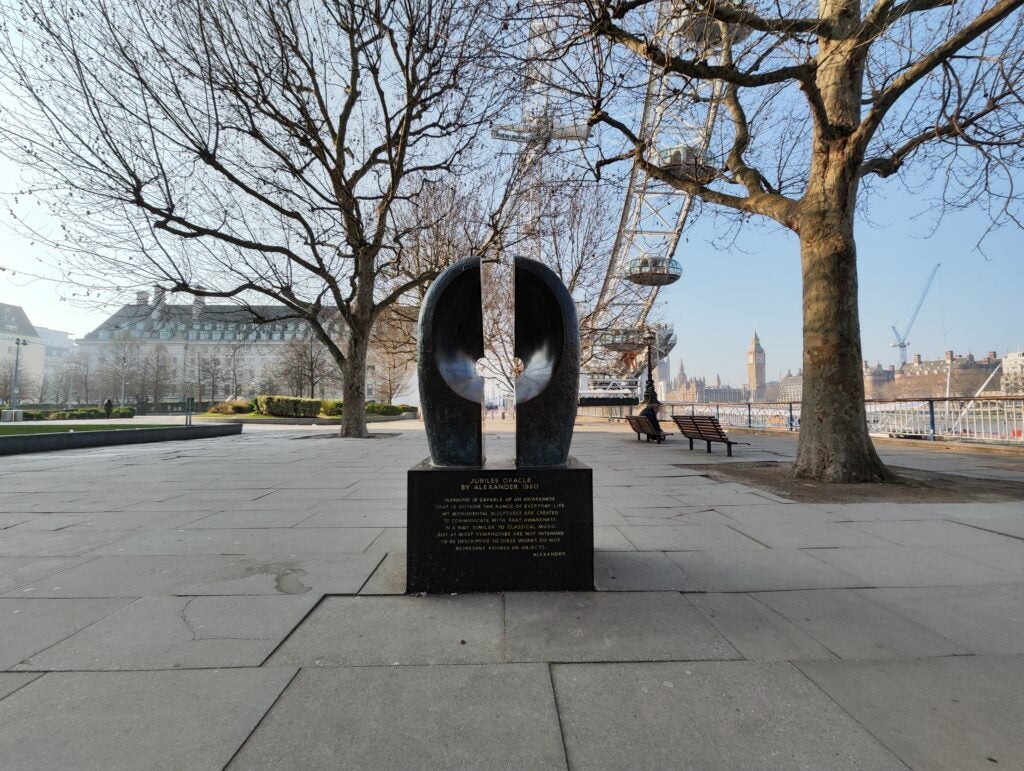Verdict
The Xiaomi 12 Pro delivers brilliant performance in the areas it matters most, including the camera, the processor, the screen, and the battery. However the lack of an IP rating, the divisive user interface, and mostly importantly the mediocre battery life do let it down.
Pros
- Excellent performance standards
- Great screen
- Strong, versatile camera system
- Attractive and comfortable design
Cons
- Middling battery life
- No IP rating
- Expensive in the UK
- Unattractive MIUI software skin
-
Super speedy charging With 120W wired charging and 50W wireless charging, this device should be topped up in minutes -
Superb screenWQHD+ resolution, 120Hz refresh rate, HDR10+ support, and more: this display is excellent -
High-resolution triple camera systemThere are three 50-megapixel sensors in the rear camera system, promising a high level of versatility
Introduction
It’s no wonder that the Xiaomi 12 Pro has been such a hotly-anticipated phone. For some years now, we’ve been very impressed with the flagship smartphones that Xiaomi has released.
Not only do the screens, cameras, and performance levels often reach exceptional standards, but typically they cost less than rivals devices from the likes of Samsung.
Unlike some predecessors though, this one isn’t actually a cheap buy – at least if you’re in the UK. The Xiaomi 12 Pro will set you back by £1049 here, the same starting price as Apple’s top-end iPhone 13 Pro Max, while the US version costs a far cheaper $999 (which converts to approximately £769).
Despite this disparity, does this handset’s performance still manage to justify that weighty price tag?
Design and Screen
- Suave, subdued design
- No IP rating
- Very good screen
The Xiaomi 12 Pro has an attractively understated design. The rounded edges and super smooth matte finish helps it to feel remarkably comfortable, even velvety, in the hand. What’s more, it doesn’t pick up the fingerprints that its glossy rivals are very prone to doing, to name the Oppo Find X5 Pro as one particularly egregious example.

It stays looking smart, with even the odd scrape or scuff unlikely to become too evident. Our review unit is the grey version, but there are also purple or blue versions available.
The pleasingly rounded camera module does protrude a little from the back, but not obnoxiously so, and overall the impression that you get is one of an attractive device that doesn’t feel the need to shout about itself.
The device measures 163.6 x 74.6 x 8.2mm, and weighs 204g. These dimensions are pretty much par for the course and similar to what you’ll find with the Samsung Galaxy S22 Plus or the OnePlus 10 Pro. It is a little large, and some users might struggle to use it with just one hand, but if you want the larger screen experience then that’s the inevitable trade-off.

In terms of other practicalities, this phone follows the overarching yet unfortunate trends of the market in ditching the 3.5mm headphone jack and expandable storage. But far more disappointing than that is the lack of an IP rating, which would indicate the device’s resistance to dust and water ingress; given that Xiaomi is charging over £1000 for this phone, it becomes far harder to justify this omission.
You can unlock the phone with your fingerprint (via the in-screen scanner) or by your face, and both of these methods worked very efficiently during my time with the phone.

The large 6.73-inch screen is slightly curved at the sides, which will have fans and detractors. Personally I much prefer a flat screen than one which laps around the edges in this way, but this iteration is still well-executed and never registered accidental touches as input.
The display itself is excellent. It has a superbly sharp 1440p resolution, matching other top flagships like the OnePlus 10 Pro and the Samsung Galaxy S22 Ultra, and the screen supports over 1 billion colours and HDR10+, for a vast and brilliant dynamic range that has colours looking better than ever. Compatible video content on Netflix really pops, leaving the screens of mid-range phones looking distinctly second-rate.
The adaptive refresh rate ranges from 1Hz to 120Hz, meaning that it can range from updating the screen 120 times per second when you’re scrolling through social media feeds, playing compatible games, or undertaking other intensive tasks that require the smoothest possible screen, or this rate can be reduced to just once per second when the screen is not in active use so as to save on energy consumption.
It’s hard to improve on the quality of this screen, with games being especially enjoyable and immersive, and video quality being excellent too.
Camera
- Very strong camera performance
- Night Mode across all three sensors
- Efficient motion tracking when shooting video
In terms of specs, the camera looks immediately promising. There are three 50-megapixel sensors here: one wide angle, one ultrawide, and one telephoto lens. So, given that the specs indicate it has high resolution snappers that run the gamut of versatility, how does it actually perform in real life?

Ultimately, this is a very capable camera system that works very well across its three lenses (the image above having been taken by the main camera, and the one below by the ultrawide).

Daylight shooting produces highly detailed shots, with a strong dynamic range that brings out a lot of colour without seeming overdone. In other words, avoiding the oversaturated look that some shots taken by Samsung flagships can fall prey to.

Portrait mode works excellently, even when not shooting faces but other objects – they are efficiently cut around while the background is blurred, producing an arresting “bokeh” effect that makes the subject pop out of the frame.

It’s noticeable that the range of colours is not quite so impressive on the ultrawide or telephoto sensors, but shots from these cameras are still very good and pack in plenty of detail, even when the telephoto lens is shooting at 2x optical zoom, as in the picture above.

Night shooting with the main camera is very impressive too – but what’s most impressive about it for me is not so much the performance of Night Mode, but the fact that even shooting without this mode enabled still produces excellent photos without much delay at all, with colours being very well represented and good amounts of noise reduction.

With the secondary sensors, the effect of night mode is more marked, with greater depth of colour when this is applied. It’s also good to see night mode being available across the sensors, since some other phones merely limit it to the main sensor.

The selfie camera, which has a 32-megapixel sensor, also performs admirably, with an efficient and effective bokeh effect at play to make faces stand out even more.
Video performance is strong too; you can shoot 4K footage at 60fps, or even 8K footage at 24fps, and the motion tracking worked very well to keep the subject in focus whenever I used it.
Performance
- High-end processor
- Excellent performance results
- Software is a mixed bag
The Xiaomi 12 Pro runs on the flagship Snapdragon 8 Gen 1 processor, and you get true flagship performance here. Demanding games all ran smoothly on high settings in my tests, adding to my enjoyment. While I didn’t sense any lag or delay when opening apps or multi-tasking between them.
This performance held up well under my benchmarking testing as well, where it registered impressive CPU scores (measured by Geekbench) and especially GPU scores (measured by 3DMark). These scores offer a reliable point of comparison between different devices by pushing them hard under specific test conditions, though it’s not a substitute for real-world use.
Take a look at the table below, and scroll across to compare it to its peers:
As you can see, CPU scores are similar to handsets such as the OnePlus 10 Pro, Realme GT 2 Pro, or the Samsung Galaxy S22 Plus – though its GPU scores are significantly better than those of the latter, so that’s great news for keen mobile gamers who want an edge over their opponents.
The chipset supports 5G connectivity, and the phone also has Wi-Fi 6 and Wi-Fi 6E support, along with Bluetooth 5.2.
However, the software is less accomplished than many of its peers. With cheaper Xiaomi phones, such as the Redmi Note 11 series, I’d be more willing to overlook these shortcomings, but I’m not so generous when it’s a flagship like this one. The user interface design is not particularly attractive to look at anyway, but more to the point my two main issues with it are bloatware and adverts.
You’ll find upon start-up that there is a hatful of pre-installed apps already there waiting for you, many of which you’ll rarely use. Even though there’s plenty of storage to host these apps, it still grates upon me to have a new phone so cluttered without my consent.
Sometimes when you download a new app, an advert pops up after the security scan is complete. It’s intrusive and irritating on any phone, but is at least excusable as part of a trade-off when you’re buying a cheap handset. However, when splashing this much money on a flagship device, especially with the surcharge for UK customers, it’s nigh-on unforgivable.
One useful aspect of the MIUI software was the existence of tabs in the app drawer, sorted by categories such as Communication, Entertainment, Games, Shopping, and more. This makes it easier to find the apps you’re looking for, when you’re browsing for them.
Battery Life
- Middling battery life
- Incredible fast-charging capability
The battery life of the Xiaomi 12 Pro is not one of its strengths. Though not terrible by any means, this 4600mAh cell could struggle to get through a busy day. In general, I found that I could get 4 and a half hours of screen time – which included browsing social media, watching videos, and playing games – before the battery levels became threateningly low.
Using individual tasks, I found that one hours’ playback on Netflix would dent the battery back by 8%, with the same amount being lost after half an hour of intensive gaming. An hour of streaming music on Spotify took 3% off the battery. Reducing the demands of the screen did not seem to make a huge difference to the battery endurance, as with the screen on a Full HD Plus resolution (1080p), an hour of Netflix still set it back by 7%.
Overall these scores are somewhat comparable to the Samsung Galaxy S22 Plus, though slightly inferior, but devices such as the iPhone 13 Pro Max will leave it in the dust.
However, on the subject of fast-charging this phone more than holds its own. The manufacturer claims that the 120W charging can fully top up the battery in just 18 minutes, and I have seen this astonishing ability demonstrated in person; however our review unit did not come with a UK charger brick so I was not able to try this out when trying out the phone myself.
Even when charging wirelessly, this device packs an impressive 50W capability that should take just 42 minutes for your phone to be fully juiced.
These charging speeds are very impressive when compared to competition from the likes of Samsung and Apple, and it even eclipses the speeds of the Oppo Find X5 Pro; it’s undoubtedly a key feature that makes life a great deal more convenient when you need to add a boost to your battery in just a few minutes, and is particularly welcome given the middling battery life.
Should you buy it?
If you want a high-performing all-rounder that has a great screen, strong performance, and an excellent camera system
If you neeg long battery life, you’re not a fan of MIUI software, or you’re cheesed off by the UK price differential
Final Thoughts
The Xiaomi 12 Pro is a very good flagship phone that has a powerful processor, a great camera system, a wonderful screen, and very fast charging.
On the other hand the battery life isn’t brilliant, and the MIUI software is arguably second-rate, but most of all I’m disappointed that British customers face such a mark-up on this product. At the American price, this would be a no-brainer purchase decision; it’s simply too good a phone to pass up at that price point.
If you’ve got this much money to play with, we’d recommend taking a look at our reviews of the iPhone 13 Pro Max, or the Samsung Galaxy S22 Ultra before taking the plunge to buy this one.
FAQs
No it does not have an IP rating, so we cannot be certain as to how it would deal with water or dust ingress
Yes, you can access 5G with this handset
It’s available in grey, blue, or purple.
Jargon buster
mAh
An abbreviation for milliampere-hour and a way to express the capacity of batteries, especially smaller ones in phones. In most cases the higher the mAh, the longer the battery will last but this isn’t always the case.
OLED
Organic Light Emitting Diode is panel technology that allows each individual pixel to produce light rather than relying on a backlight. This enables the screen to accurately display blacks by turning off the pixel, resulting in improved contrast compared to conventional LCD panels.
Dolby Vision
Dolby Vision is a variant of HDR, adding a layer of dynamic metadata to the core HDR signal. This dynamic metadata carries scene-by-scene (or frame-by-frame) instructions from content creators on how a TV should present the images to improve everything from brightness to contrast, detailing and colour reproduction.
HDR10+
HDR10+ is a HDR format supported by Panasonic and Samsung as a free to use, open platform alternative to Dolby Vision. It adds dynamic metadata on top of the core HDR10 signal that tells a TV how it should adjust the brightness, colours and contrast of content for the most optimal picture quality.
IP rating
An abbreviation for ‘Ingress Protection Code’, which lets you know to what extent a device might be waterproof or dustproof.
Wi-Fi 6
One of the latest wireless standards that allows for faster speeds and better coverage when paired with compatible routers.
5G
Offering faster download and upload speeds when compared to 4G. Great for game streaming and HDR video playback. Not supported everywhere yet and speeds vary wildly.
















